jamesp
Cave Dweller 
Member since October 2012
Posts: 36,607
|
Post by jamesp on Dec 5, 2016 9:04:06 GMT -5
I guess that is what makes brecciate rocks. In this case it is brecciated breccia. Sometimes they are 3 levels, brecciated breccias that were brecciated. What type of force happened to shatter rock lie this ? Comet impact makes sense, but tectonic and volcanic less so. If the rock is a brecciated conglomerate of smaller breciated rock does that mean the rock has seen multiple shocks from different time zones and allowed healing in between ? Mysteries mysteries. Thanks for the shocking rocks 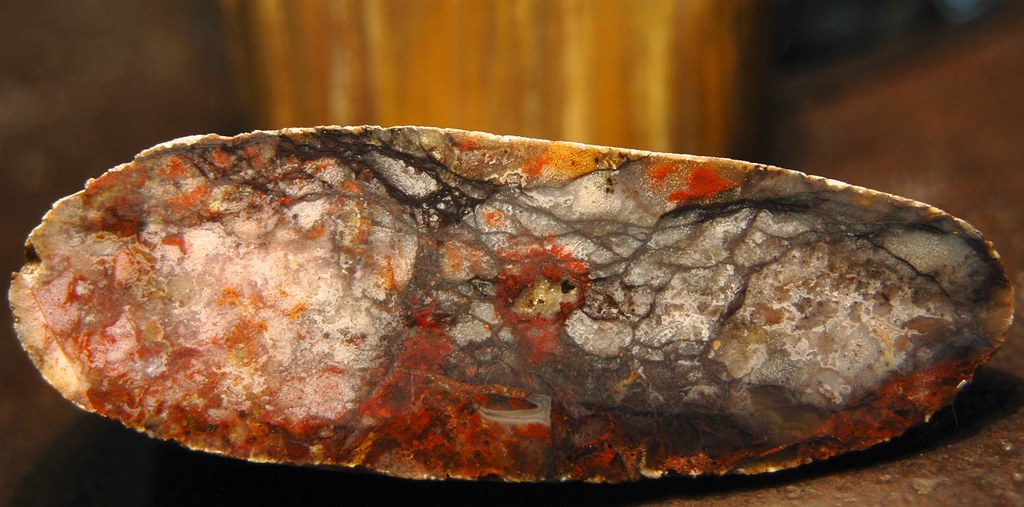 Closer in. Breccia within breccia 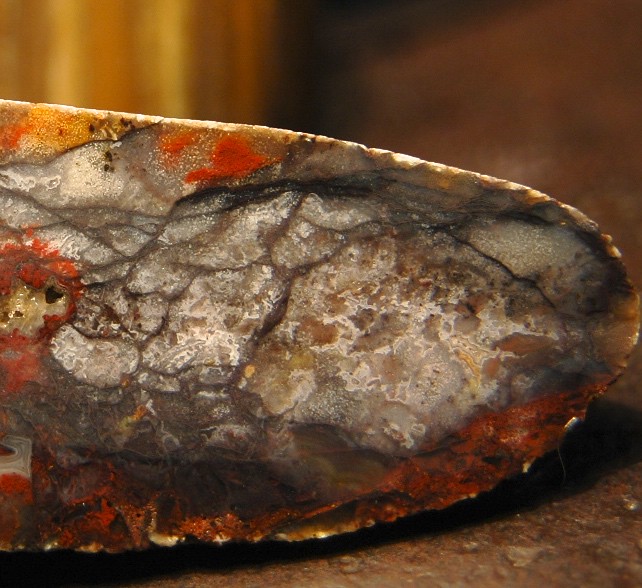 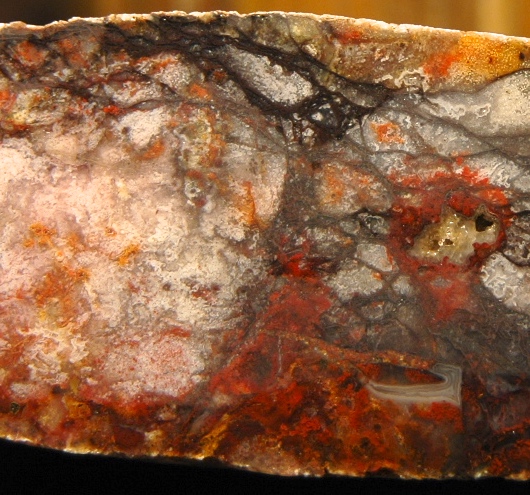 |
|
|
|
Post by captbob on Dec 5, 2016 9:16:49 GMT -5
May not require anything as earth shattering as a comet impact. How about freezing, earthquakes/tectonic pressure or just plain ol water? Maybe Mel has some answers to such mysteries.
|
|
Fossilman
Cave Dweller 
Member since January 2009
Posts: 20,723 
|
Post by Fossilman on Dec 5, 2016 10:35:13 GMT -5
I think Jeremy sent me some rock with this same shock treatment,that mother nature provides...Weird stuff,for sure!
|
|
Sabre52
Cave Dweller  Me and my gal, Rosie
Me and my gal, Rosie
Member since August 2005
Posts: 20,494
|
Post by Sabre52 on Dec 5, 2016 11:53:55 GMT -5
Re wood breccias, I too doubt anything to do with comets. I think most likely a combination of pressure stress as the petrified wood was compressed between layers of sediments and water intrusion and weathering that caused most of the fracturing, which was thereafter resealed with silica from those overlaying layers of old marine sediments. This compression is often seen in recovered full rounds here in Texas which are no longer rounds like at Petrified Forest but rather compressed ovals or flattened hunks. This especially is apparent in palm rounds most all of which are no longer fully round.
Some of the brecciated effect may just be due to partial decomposition of the actual wood before mineralization too. Texas specimens often show evidence of full decomposition before mineralization ( limb casts) or partial decomposition by fungi or bacteria. ie pocket rot wood. I suppose in that case, the actual wood might be mineralized with opaque jasper replacing the unrotted sections and clear chalcedony filling the voids. Most the famous shrinkwood / hexagonally fracture petrified wood, seems from the patterns, to have been broken and resealed after petrification. Scott addresses this process well in his internet paper. Just Google Hexagonally fractured petrified wood. This wood, by the way, is much younger creationwise, than the big comet strike period in the late Cretaceous. Think its mostly like only 20 million years old or so.
As for non wood conglomerates, that's a lot tougher, as in the Rio grande gravel, there are certainly a lot of old rocks, so there could have been a lot of different stresses shattering them over the eons, probably including the big ole comet. Could have started as an almost concrete like conglomerate of caliche and hard fragments from multiple sources and then had the limey parts dissolved away and replaced with silica. This is kind of illustrated when you cut some of the crappier breccia which is not fully infused with silica and still has cement like granular stuff in some of the voids.....Mel
|
|
|
|
Post by txrockhunter on Dec 5, 2016 12:56:38 GMT -5
Not sure if this qualifies as hexagonally fractured........ Some towards the bottom right are hexagonal and resembles the photos on page 2 of Scott's paper. I thought it looked like burnt wood that was petrified after. 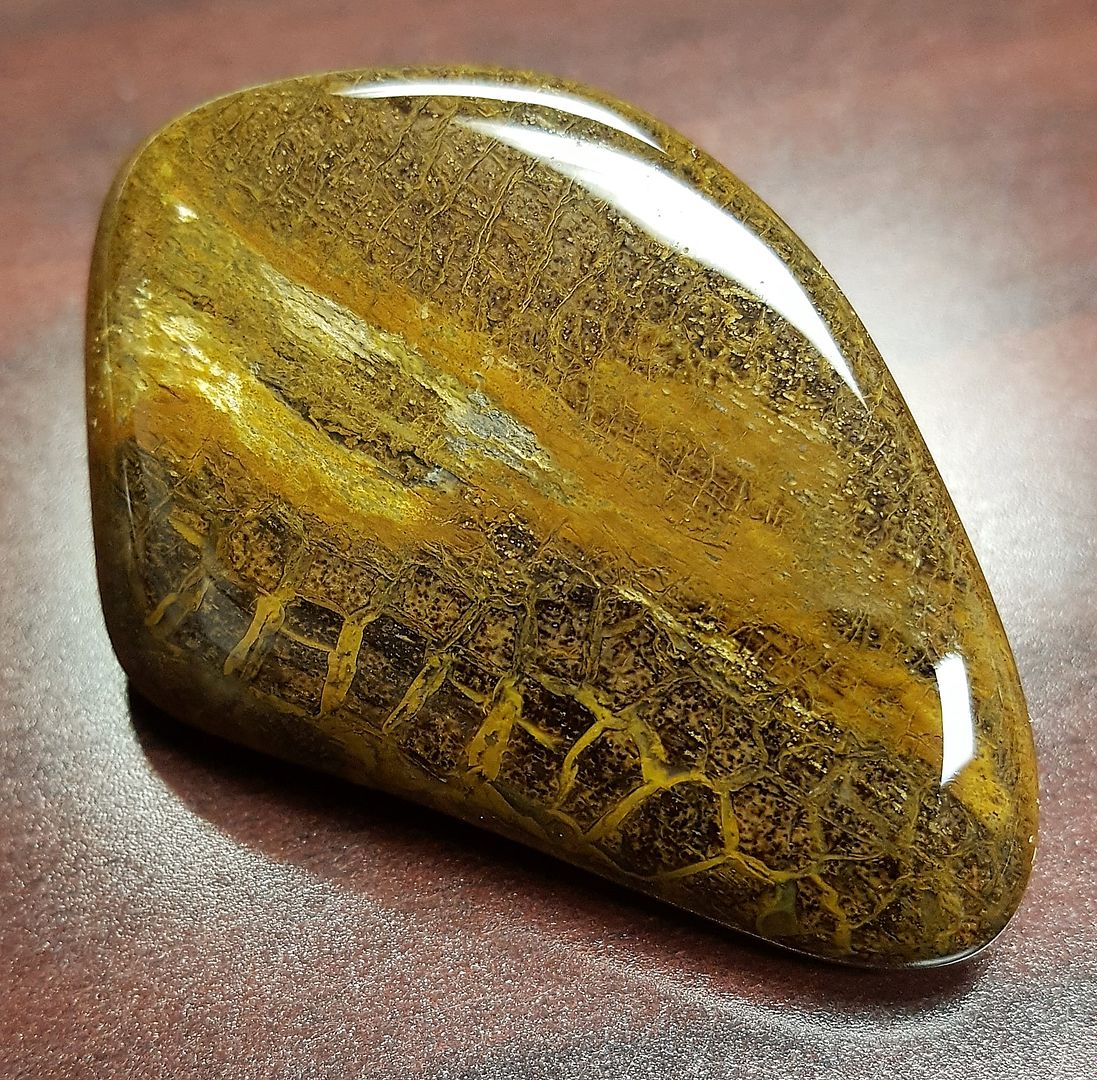 |
|
Fossilman
Cave Dweller 
Member since January 2009
Posts: 20,723 
|
Post by Fossilman on Dec 5, 2016 15:29:33 GMT -5
WOW! That's a nice one!
|
|
|
|
Post by Peruano on Dec 5, 2016 15:50:37 GMT -5
I'm tempted to think that the last photo shows vascular structure. I'm no plant histologist, but its more similar to biological structure than geological fractures. Think about what a cross section of a celery root would look like. Mother nature has lots of forces that can crack rocks 9 different ways and yes multiple times are not unlikely. Now for that to happen, and have it heal a couple of times with identifiable difference, and even then to have some dude from Georgia drive to Texas to pick up that rock - now that's an oddity worth discussing on the internet.
|
|
Sabre52
Cave Dweller  Me and my gal, Rosie
Me and my gal, Rosie
Member since August 2005
Posts: 20,494
|
Post by Sabre52 on Dec 5, 2016 16:13:13 GMT -5
|
|
|
|
Post by txrockhunter on Dec 5, 2016 17:00:44 GMT -5
Yep, that's classic hexagonal fracturing. Not always perfect hexagons but very geometric. Lots of that in George West region of Texas and not part of the plant structures, though remains of plant vascular system can often be seen within the fractured areas. Again, the article by Scott on this wood is very informative and well worth a read. Couple of classic George West examples: Very cool! I'm pretty sure I have more, just thought it was some sort of charred wood.... Thank you for posting the article! Great information in there and the added bonus of being able to tell people that I found Hexagonally Fractured Petrified Wood (HFPW)! Jeremy |
|
jamesp
Cave Dweller 
Member since October 2012
Posts: 36,607
|
Post by jamesp on Dec 5, 2016 18:13:53 GMT -5
So much breccia on the Rio. It just buffaloed me. Breccia that looked like some God awful forces worked on it. Extreme force understandable, but it looks like high speed impact type forces to me. Like above rock. As if the earth was a meteorite field at numerous times in it's past. Some look as if re-healed several times over. i.e. long periods of time between damage. snowmom has displayed photos of impactite from that big comet in S Canada. Not much different looking than much of the Rio breccia. HFPW, shrink wood, pocket wood all make sense due to organic matter altering in many ways after listening to above conversation. Freeze shattered, makes sense. Certain it got very cold  |
|
|
|
Post by Peruano on Dec 5, 2016 18:16:37 GMT -5
That golden one above sure fooled me, but its pretty beyond words.
|
|
jamesp
Cave Dweller 
Member since October 2012
Posts: 36,607
|
Post by jamesp on Dec 5, 2016 21:16:06 GMT -5
|
|
Sabre52
Cave Dweller  Me and my gal, Rosie
Me and my gal, Rosie
Member since August 2005
Posts: 20,494
|
Post by Sabre52 on Dec 6, 2016 8:59:14 GMT -5
James that one is kind of a breccia but it looks more like a fractured rock to me. When I think of breccia, I think of the segments being more separated and resealed with wider zones of agate like Stone Canyon jasper.....Mel
|
|
|
|
Post by woodman on Dec 6, 2016 22:10:27 GMT -5
 Now this one was shocked just a bit! pETRIFIED WOOD from the Stinking Water mountains of Oregon.  photobuckete sucks!!! |
|
|
|
Post by woodman on Dec 6, 2016 22:13:46 GMT -5
How would this small piece fit into the puzzle? 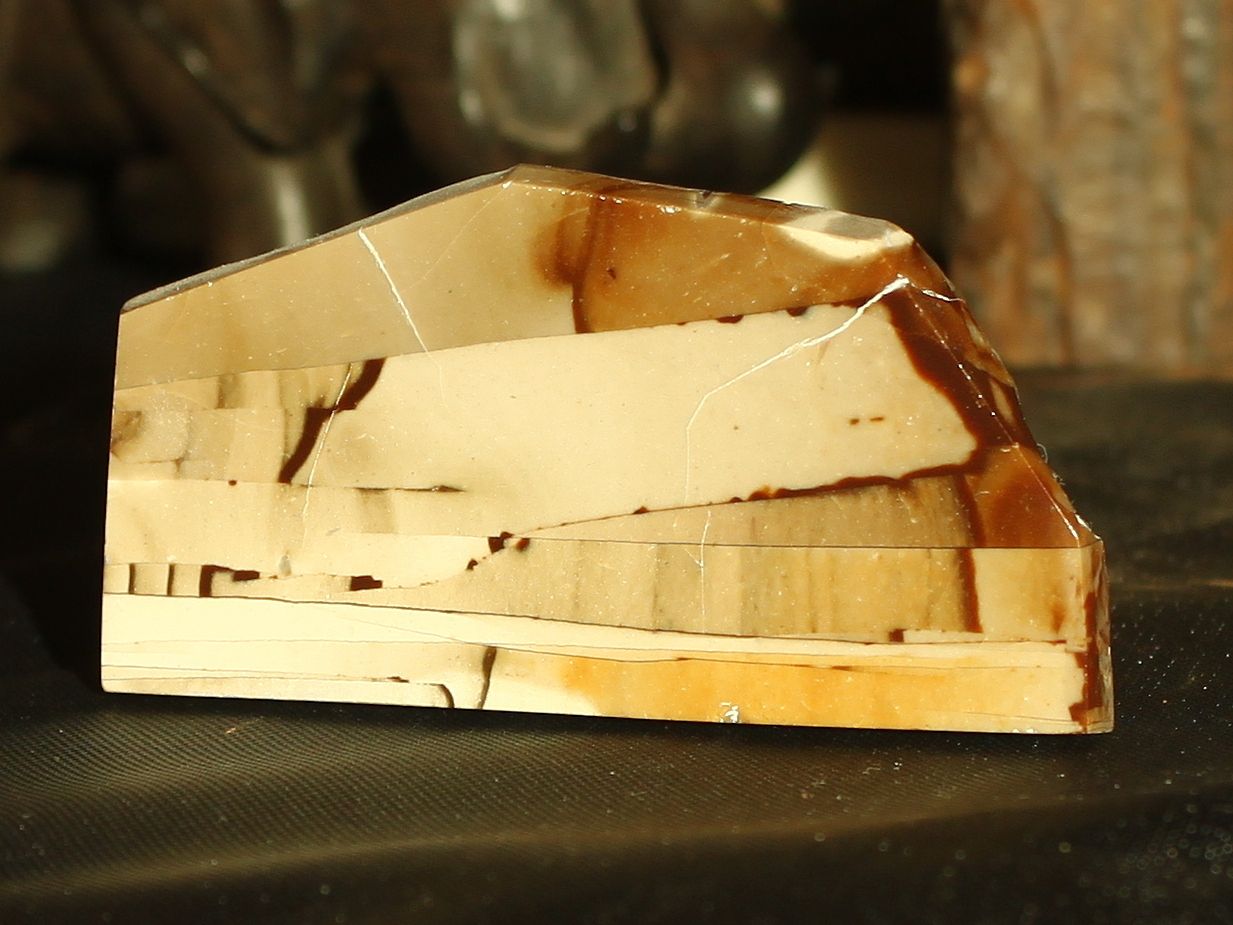 |
|
|
|
Post by tandl on Dec 7, 2016 11:24:48 GMT -5
I guess that is what makes brecciate rocks. In this case it is brecciated breccia. Sometimes they are 3 levels, brecciated breccias that were brecciated. What type of force happened to shatter rock lie this ? Comet impact makes sense, but tectonic and volcanic less so. If the rock is a brecciated conglomerate of smaller breciated rock does that mean the rock has seen multiple shocks from different time zones and allowed healing in between ? Mysteries mysteries. Thanks for the shocking rocks  Closer in. Breccia within breccia   Looks to me like a metamorphic . metamorphosed sedimentary rock . |
|
jamesp
Cave Dweller 
Member since October 2012
Posts: 36,607
|
Post by jamesp on Dec 7, 2016 21:09:37 GMT -5
|
|
|
|
Post by tandl on Dec 9, 2016 13:50:30 GMT -5
i think silicified sedimentary rock is what it is now. see any fossils in it? . the silicication can distort the fossils and often obliterate them leaving remnant patterns .as i look at it now,it looks like a moss type agate possibly after limestone or a fossil limestone ...
|
|
jamesp
Cave Dweller 
Member since October 2012
Posts: 36,607
|
Post by jamesp on Dec 9, 2016 15:21:55 GMT -5
i think silicified sedimentary rock is what it is now. see any fossils in it? . the silicication can distort the fossils and often obliterate them leaving remnant patterns .as i look at it now,it looks like a moss type agate possibly after limestone or a fossil limestone ... Good luck tandl. More crazy silicifications at the Rio than you can shake a stick at. It sure does have a small pocket of druzzy crystals. Appears to have some moss structures. Plenty of cracks. Plenty of healing. It has that dimpled texture that water worn cherts and agates have. There is a lot of purple jasper with similar markings(see Sci Fi jasper). Every shade purple from whitish to darn near black purple. Healed cracked rocks and breccia is common. |
|
|
|
Post by 1dave on Dec 30, 2020 12:39:55 GMT -5
Stylolites: A Geologic Structure storymaps.arcgis.com/stories/f3ddb77bc8584561bf9853f082344a0dAn introduction to stylolites: what they are and how they form Sarah Hennessey November 18, 2019 What is a Stylolite?  Greek pillar? Not exactly. . . Image from pixabay.com (2019) Stylolites take their name from the Greek word stylus, meaning "pillar," and the title couldn't be more fitting (Merino, 1992). Indeed, stylolites do somewhat resemble iconic Greek architecture - though, admittedly on a much smaller scale. In rocks, stylolites appear as irregular seams or wavy lines. These lines may somewhat resemble a set of shark's teeth, or even the pulse on a heart rate monitor; however, they are actually a result of minerals left behind after a pressure dissolution (Fossen, 2016). Image from pixabay.com (2019). Pressure dissolution (also known as pressure solution): "ions move in fluid films and pore fluid (chemically and stress controlled)" (Fossen, 2016). Note how the the stylolite on the right mimics a heart ekg. Stylolites maintain this wavy pattern; though, some are more jagged than others. Stylolites may be horizontal, inclined, or even found in combination with other stylolites. Photo by James St. John (2007). Pressure Dissolution and Stylolite Formation 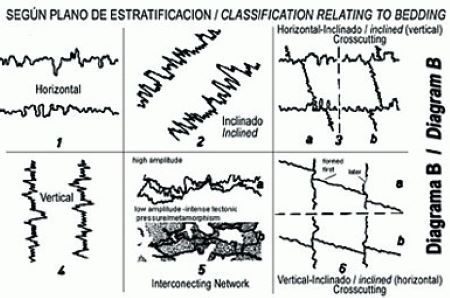 |
|